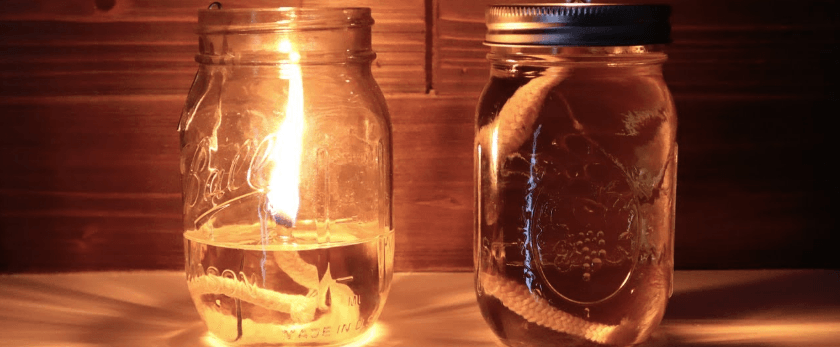In today's world, where climate change and environmental degradation are major concerns, it is more important than ever to adopt sustainable practices in our daily lives. One simple yet effective way to do so is by making our own oil lamps. Not only are they a great alternative to traditional lighting sources, but they also help reduce our carbon footprint and promote a more eco-friendly lifestyle. In this article, we will discuss why homemade oil lamps are better for the environment, what materials are needed to make them, and provide step-by-step instructions on how to make your own.
The Environmental Impact of Traditional Lighting Sources
Traditional lighting sources, such as incandescent bulbs and fluorescent lights, have a significant impact on the environment. These sources consume a large amount of energy, which is primarily generated from non-renewable sources like coal and natural gas. This results in the emission of greenhouse gases, contributing to climate change and air pollution.
Moreover, the production and disposal of traditional lighting sources also have a negative impact on the environment. The manufacturing process requires the use of toxic chemicals and materials, which can contaminate the air, water, and soil. Additionally, when these sources are disposed of, they end up in landfills, where they release harmful substances into the environment.
Why Homemade Oil Lamps are Better for the Environment
Homemade oil lamps, on the other hand, offer a more sustainable and eco-friendly alternative to traditional lighting sources. Here's why:
1. They Use Renewable Energy
Unlike traditional lighting sources, homemade oil lamps use renewable energy in the form of vegetable oil or beeswax. These resources are readily available and can be replenished, making them a more sustainable option.
2. They Have a Lower Carbon Footprint
Since homemade oil lamps use renewable energy, they have a lower carbon footprint compared to traditional lighting sources. This means that they emit fewer greenhouse gases, helping to mitigate the effects of climate change.
3. They Promote Responsible Consumption
Making your own oil lamps promotes responsible consumption by reducing the need for disposable lighting sources. This, in turn, reduces the amount of waste that ends up in landfills and contributes to environmental pollution.
4. They Can Be Reused and Repurposed
Homemade oil lamps can be reused and repurposed, making them a more sustainable option. Once the oil has burned out, you can refill the lamp and use it again. You can also repurpose old jars or bottles to make your oil lamps, reducing the need for new materials.
Materials Needed to Make Homemade Oil Lamps
Making your own oil lamps is a simple and cost-effective process. Here are the materials you will need:
- A glass jar or bottle (preferably with a lid)
- Vegetable oil or beeswax
- Cotton wick or a piece of cotton fabric
- Scissors
- A small piece of wire or a paperclip
- Matches or a lighter
Step-by-Step Instructions
Now that you have all the materials, let's get started on making your own homemade oil lamp.
Step 1: Prepare the Jar or Bottle
Start by cleaning and drying the jar or bottle you will be using for your oil lamp. Make sure it is free of any residue or labels.
Step 2: Make the Wick
Cut a piece of cotton wick or fabric that is slightly longer than the height of your jar or bottle. If you are using fabric, make sure it is tightly woven and does not have any loose threads.
Step 3: Secure the Wick
Using a small piece of wire or a paperclip, secure one end of the wick to the bottom of the jar or bottle. Make sure the wick is centered and straight.
Step 4: Fill the Jar or Bottle with Oil
Pour vegetable oil or melted beeswax into the jar or bottle, leaving about an inch of space at the top. Make sure the wick is fully submerged in the oil.
Step 5: Trim the Wick
Trim the wick to about half an inch above the oil level. This will prevent the flame from getting too high and causing the lamp to smoke.
Step 6: Light the Wick
Using matches or a lighter, light the wick and adjust the flame to your desired height. You now have your very own homemade oil lamp!
Responsible Disposal of Oil and Wicks
It is important to dispose of the oil and wick responsibly to ensure a sustainable future. Here are some tips on how to do so:
- When the oil has burned out, let it cool down before disposing of it. Do not pour it down the drain as it can clog pipes and harm the environment.
- You can reuse the oil by straining it through a coffee filter and storing it in a sealed container.
- The cotton wick or fabric can be composted or disposed of in the trash.
Conclusion
Homemade oil lamps are a simple and sustainable solution for lighting your home. By making your own, you can reduce your carbon footprint, promote responsible consumption, and repurpose materials that would otherwise end up in landfills. So why not give it a try and make your own oil lamp today? Together, we can make a positive impact on the environment and create a greener, more sustainable future.










